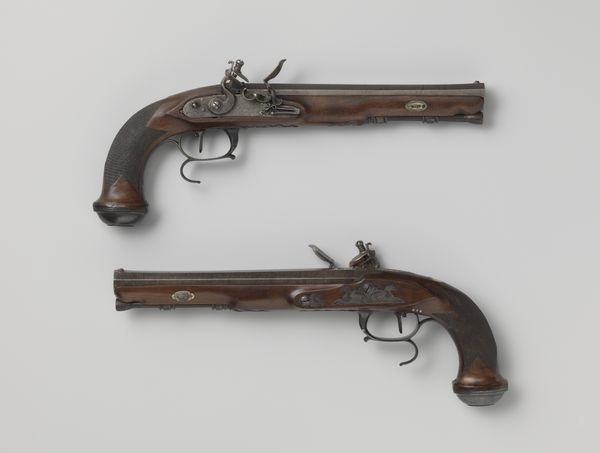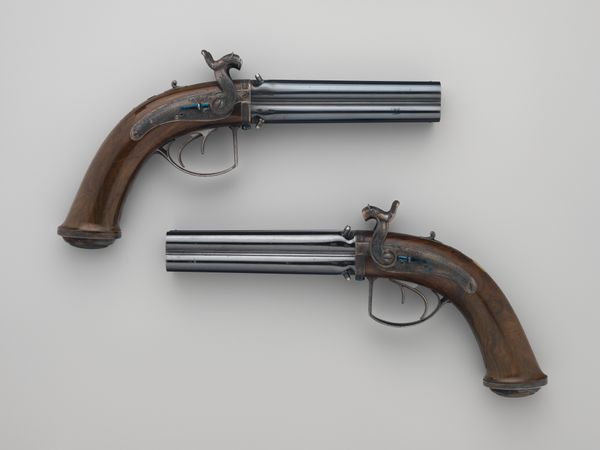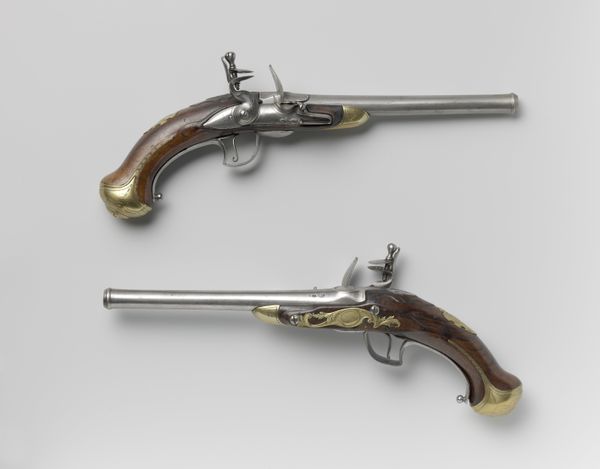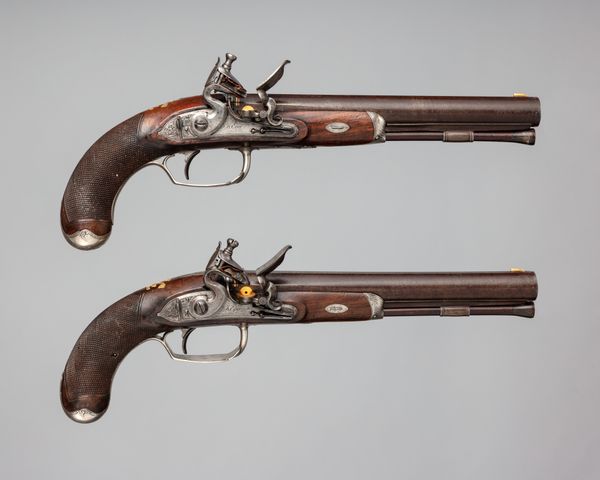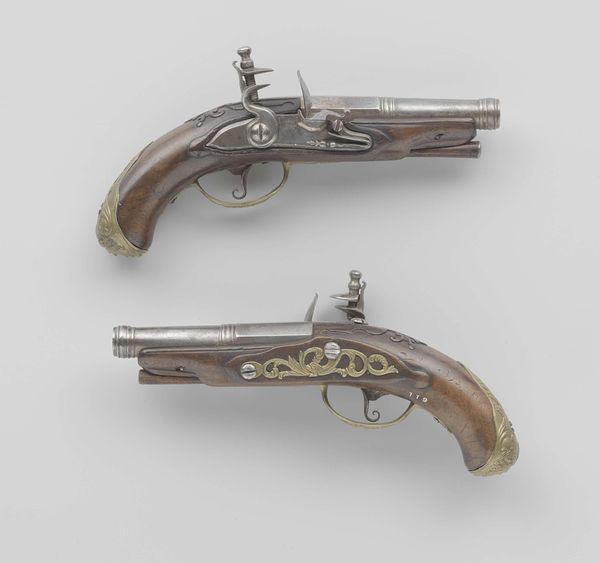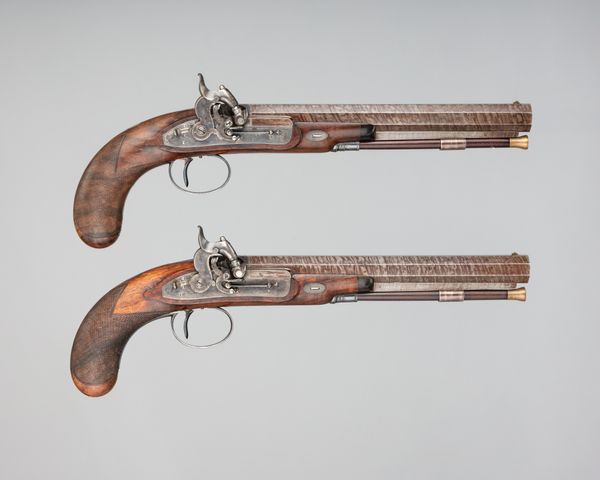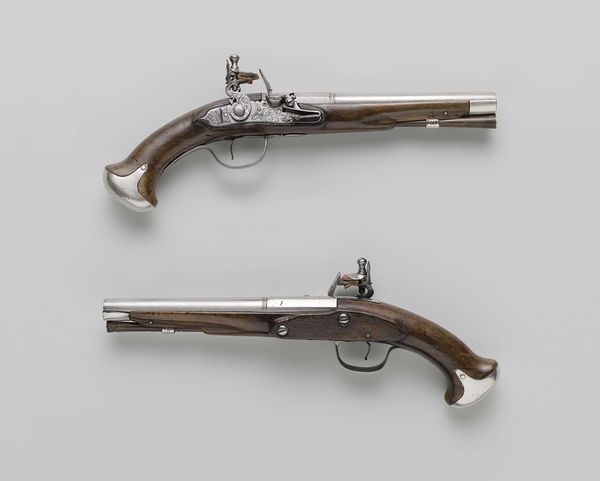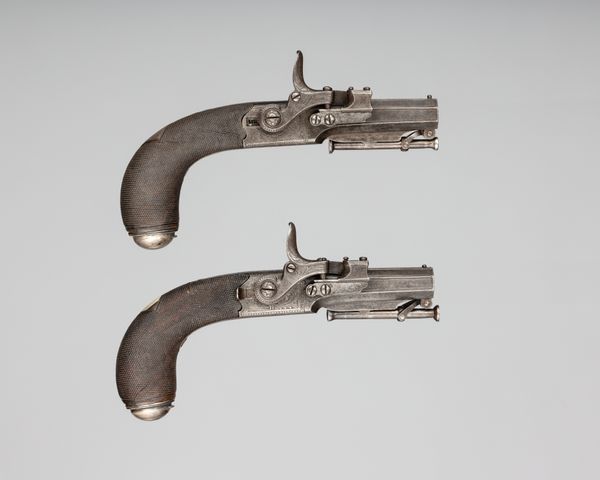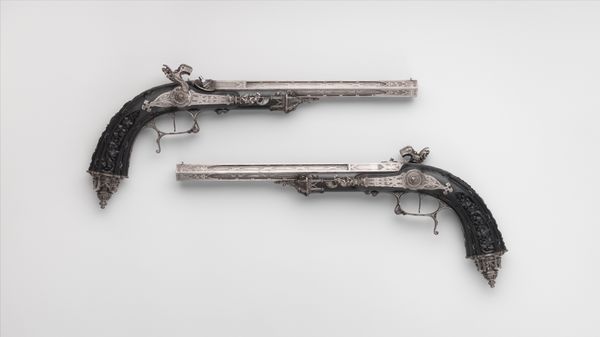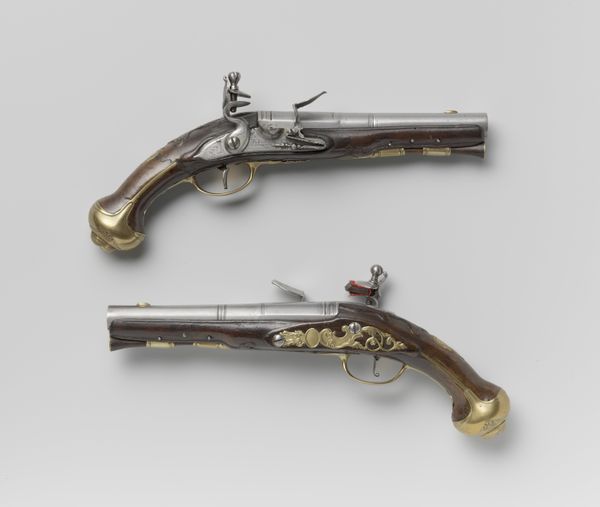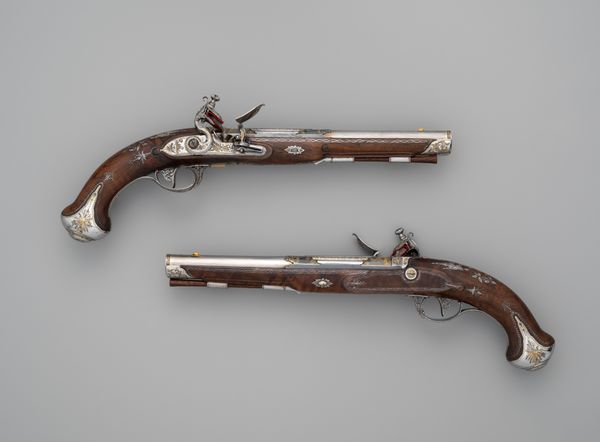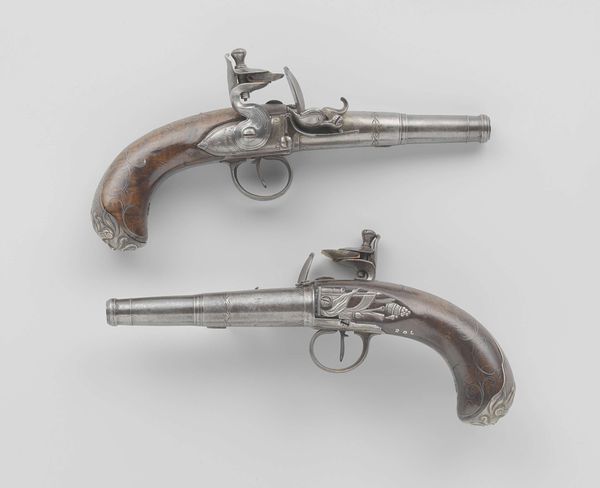
Pair of Over-and-Under Tube-Lock Percussion Pistols with Case and Accessories 1780 - 1840
0:00
0:00
metal, sculpture, wood
#
portrait
#
metal
#
sculpture
#
sculpture
#
wood
#
history-painting
#
armor
Dimensions: Pistol (a): L. 9 3/4 in. (24.8 cm); L. of barrels 4 3/8 in. (11.1 cm); Cal. of barrels .45 in. (11.4 cm); Wt. 1 lb. 2.2 oz. (516 g); pistol (b): L. 9 5/8 in. (24.4 cm); L. of barrels 4 5/16 in. (11 cm); Cal. of barrels .44 in. (11.2 mm); Wt. 1 lb. 2.6 oz. (527.3 g); powder flask (c): H. 4 3/4 in. (12.1 cm); Wt. 5.1 oz. (144.6 g); bullet mould (d): L. 4 5/8 in. (11.7 cm); Wt. 2.3 oz. (65.2 g); patch box (e): H. 13/16 in. (2.1 cm); Diam. 9/16 in. (1.4 cm); Wt. 1 oz. (28.3 g); case (f): H. 2 3/4 in. (7 cm); W. 14 7/8 in. (37.8 cm); D. 8 in. (20.3 cm); Wt. 4 lb. 5.5 oz. (1970.3 g)
Copyright: Public Domain
Curator: The Metropolitan Museum of Art holds these striking Over-and-Under Tube-Lock Percussion Pistols with Case and Accessories, crafted between 1780 and 1840 by Durs Egg. Editor: My immediate impression is one of understated menace, or perhaps even futility. The polished wood and cold steel speak of both craftsmanship and the inherent purpose of the tool. Curator: Yes, look at how the maker utilizes materials – the wood grips suggest a human connection, literally molded by hand and time. These weapons represent a transition from craft production to more industrialized forms, reflecting a changing society and labor practices in the late 18th and early 19th centuries. What about their formal attributes? Editor: Well, formally, the composition balances elegance with stark functionality. The curves of the wood provide contrast to the rigid metallic elements, all culminating in a sort of visual paradox that hints at violence lurking beneath the surface. It is almost a study of complementary forms. The layering also enhances depth, creating a dimensional interplay. Curator: The craftsmanship itself conveys messages about social hierarchy. These weren’t everyday objects but status symbols meant for a select class, which controlled not only their means of self-defense but access to power. You see, these objects narrate economic relationships as much as technical prowess. Editor: True, but let's focus back on its physical design. Consider the interplay between form and function - the textures, the way light catches on the engraved metal and how those reflections serve to break up their solidity. There is a deceptive sophistication within the piece, isn't there? Curator: Absolutely. Looking closely, one must consider who had access to such craftsmanship? We should really investigate the history of their components and their availability. How does that limitation of resources influence its reception and context? Editor: Interesting questions. The maker knew that to achieve balance and proportion—in color, texture, and form—can be deeply disturbing. The formal sophistication here serves to amplify the sinister elegance of its utilitarianism, turning tools into artful objects. Curator: Exactly. And to appreciate these pistols, we really need to place them within that intricate network of commerce, class, and violence to see beyond simple beauty and perceive the structures these items reveal. Editor: Perhaps. For me, experiencing its visual tensions has unveiled something compelling. This exploration has created, hopefully, a unique perception about their intent and essence.
Comments
No comments
Be the first to comment and join the conversation on the ultimate creative platform.
